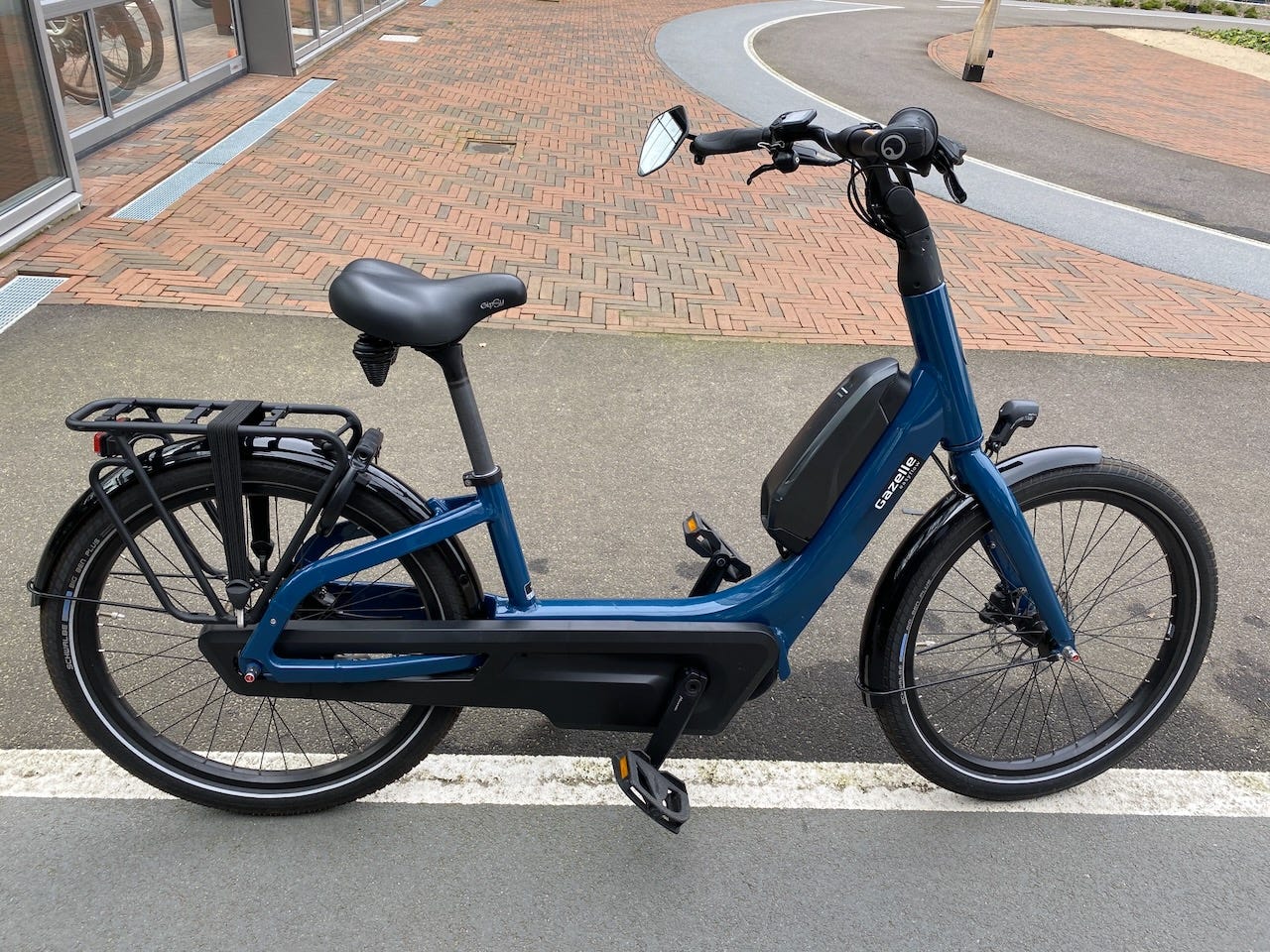Bikes are a miracle pill for older adults, but they won't take it unless they feel safe
A new report from Cycle Toronto calls for better infrastructure and an understanding of the needs of older adults.
Peter Walker, author of The Miracle Pill, wrote in the Guardian:
“Imagine if a team of scientists devised a drug which massively reduced people’s chances of developing cancer or heart disease, cutting their overall likelihood of dying early by 40%. This would be front page news worldwide, a Nobel prize as good as in the post. That drug is already here, albeit administered in a slightly different way: it’s called cycling to work.”
Howard Luks, MD, who writes a Substack titled “Built to move, Born to Heal”, points to a new study of physical activity:
“Physical activity is one of the most powerful tools for enhancing health and longevity, offering benefits that range from improved brain function and cardiovascular health to reduced risks of chronic diseases, including diabetes, cancer, and neurodegenerative conditions. Regular movement, whether aerobic, anaerobic, strength training, or balance exercises, positively impacts metabolism, immune function, mental well-being, and aging. Although not a cure-all, exercise is a cornerstone of preventive medicine, reinforcing the importance of an active lifestyle. By integrating physical activity with proper nutrition and overall wellness strategies, individuals can optimize their health span, ensuring a longer, healthier life.”
In his book, Walker extolls the virtues of exercise and cycling in particular, but notes the reason that many people don’t cycle:
“This is the point at which a sceptic might say: what good is an ‘excellent’ or even ‘superior’ VO2 max score if you end up dead? The biggest single reason cited for why so few people cycle in the UK is safety, particularly perceived safety. Such concerns are hugely understandable, and play an enormous part in low levels of active travel.”
Cycle Toronto is trying to address this problem of getting older adults on bikes with a new report, Pathways to Mobility: Connecting older adults to active transportation in Toronto.
The lead authors Alison Stewart and Igal Cano interviewed older adults, examined City policies supporting active transport, and developed recommendations.
They start by noting, “Older adults are a key demographic that can greatly benefit from cycling, not only for its physical and health advantages but also for its positive impact on social well-being.”
They then get into the challenges. To nobody’s surprise, safety concerns are the biggest barrier to cycling. “The most common barrier to cycling was finding safe places to ride. Regardless of biking experience, participants viewed existing roads without separated bike lanes as unsafe and a deterrent to biking.” However the infrastructure is missing where it is needed most- in the former suburbs.
“Implementing bike lanes improves the safety of all road users, in particular children, older adults and people living with disabilities, even if they themselves don’t ride a bike. Etobicoke, York, North York, and Scarborough have few bike lanes, but face the bulk of dangerous arterials and traffic collisions. Until these communities gain access to safe infrastructure, Vision Zero and TransformTO goals will not be achieved.”
The design of the bikes was also a problem for some older riders.
“A barrier to trying a bike was the Bike Share Toronto’s “one size fits all” style of classic bikes and e-bikes. In all four workshops, primarily among Asian and South East Asian women, the lowest seat height was too high and prevented them from being able to participate, despite their desire to try.”
This is a subject I have discussed before, after trying the Gazelle Easyflow e-bike, in my call for a universal design that everyone can use. Perhaps Bike Share Toronto should look into these.
The study found that health policies in the city ignore cycling as a tool for improving mobility and health. Older adults are not included in active transportation planning.
The authors recommend that cycling as fitness be included in City Seniors Strategy. I like their idea of including stationary bikes in parks. Bike share Toronto’s fleet should include frames that accommodate a wider range of people. They conclude:
“Promoting cycling as a tool for aging in place will improve the health and wellbeing of Toronto’s seniors by increasing their mobility options. This will contribute to creating a healthier, more equitable city that benefits people of all ages, abilities and incomes regardless of where they live.”
Interestingly, the survey found that older adults hate the term “seniors,” associating it with long-term care rather than active community living. A recommendation that caught my eye was “Integrating senior programming with wider public programming to expand access to older adults who don’t view themselves as ‘seniors’.” It’s the difference between what I have described as the young-old and the old-old, which is usually ignored or misunderstood.
There are many of us “young-old” types who are relatively fit, who cycle instead of drive, but face some limitations as we age. I am most comfortable in fully separated bike lanes. I don’t have the flexibility or vision of younger people; when a car or truck blocks the bike lane, I have to stop instead of just going around it due to shrinking peripheral vision. I am terrified of being clipped during close passes by fast scooter-style e-bikes that are not even legal in the bike lanes.
There are also more of us every day. As the report notes, we need a better understanding of the strengths and limitations of older adults on the road. We need more and better bike lanes, particularly in the suburbs. We need better enforcement of speed limits and restrictions on illegal e-bikes that scare older riders out of the bike lanes.
The e-bike revolution presents such a great opportunity to help older adults become more active, particularly in the suburbs where distances are greater and they have spent decades driving everywhere. Of course, the suburbs are also where the politicians vociferously oppose every bike lane proposal and have succeeded in getting some removed. They will ignore or reject this report.
And ultimately, we have to get rid of the elephant in the city, the Premier of Ontario, who wants to rip up the bike lanes we have and limit new ones. None of this will happen as long as he is around.
Cycle Toronto has also issued an Older Adult Cycling Guide that is full of useful tips and inspiring interviews. Download it here.
From the archives: Boomers and bikes were made for each other
From 2012 to 2020, Treehugger was owned by the Mother Nature Network, where I wrote regularly about the problems of aging in our cities and suburbs. From January, 2018:
Special offer!
I do not want to put up a paywall on this site, but it provides a meaningful portion of my income. So here’s a limited-time offer: I will send a signed copy of the print edition of “Living the 1.5 Lifestyle” to anyone in the USA or Canada who signs up for a one-year subscription (C$50, cheap at about US$35- US$37-the dollar is falling ). I am running out of stock, so hurry!









I used to be an avid bicyclist riding in centuries (100-mile bike treks) and would ride my bike anywhere pedal-pushing (and pulling) would allow.
But, after moving to Fresno in California’s overly air-polluted San Joaquin Valley, I gave bicycling up. So, you can espouse or extoll the virtues of biking all you want. The part of the story you left out is having to contend with heightened levels of pollution in the air made worse by accelerated or deepened breathing. Add to this the added exposure to air toxics riding on thoroughfares also driven on by polluting vehicles, especially SUVs, which there seems to be a preference for in these here parts.
Cyclists need their own exclusive rights of way, separate from roadways made for motor vehicles. As far as I’m concerned, the two disparate modes were not made to coexist. Turning abandoned former railroad lines into bikeways is one laudable solution. A lot of railroad track in the United States has been abandoned over the decades. Much of that could have been turned into bike- and walkways. Some, fortunately, has. More of that seems in order.
Our provincial government in Alberta is studying (in advance of interfering) with our city bike lanes. Yes I'm a senior who wants to ride my bike to stay healthy. Thanks for the article.